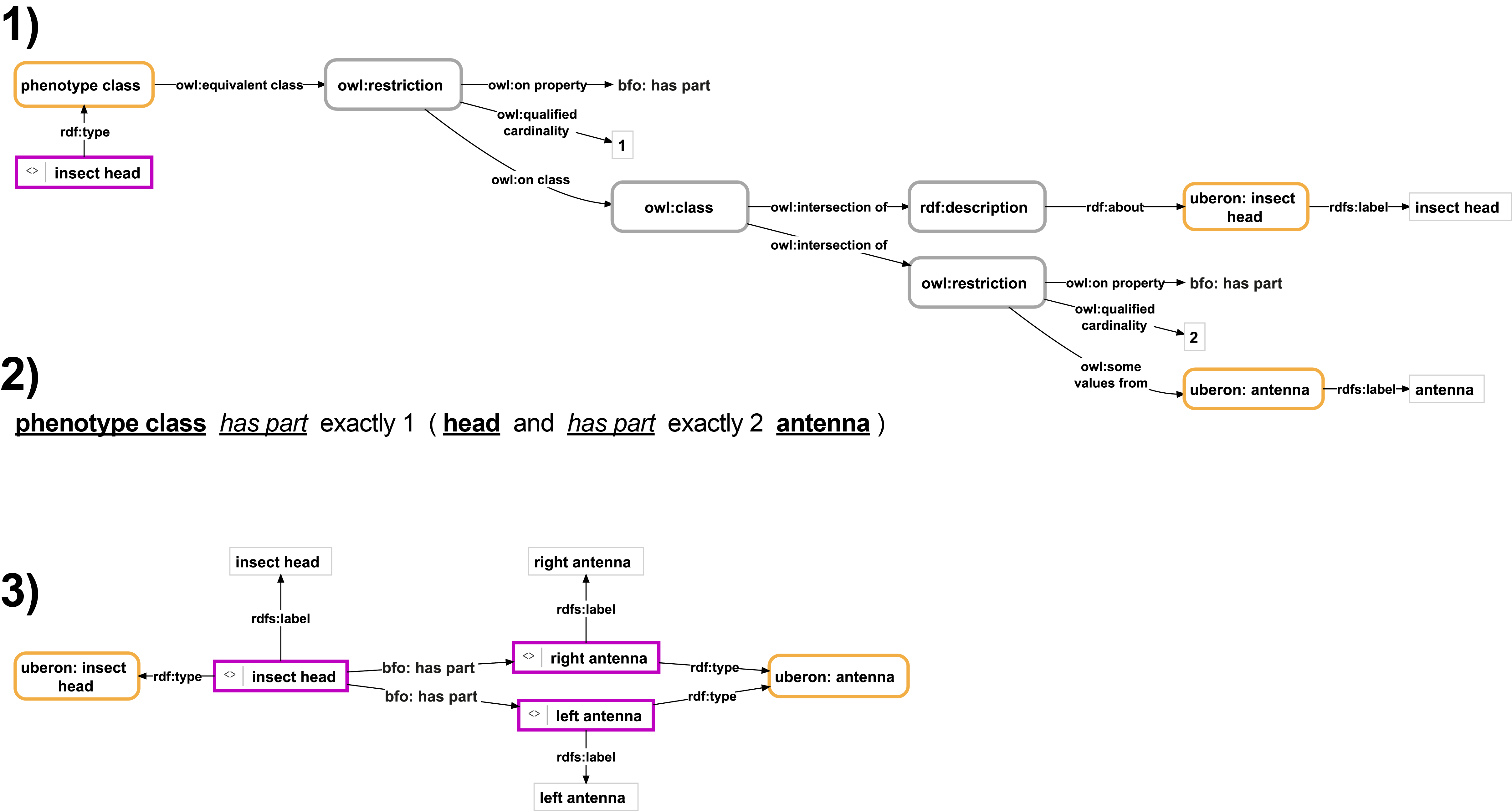
Phenotype description of an insect head with two antennae in form of a Semantic Phenotype in the form of an RDF-based graph or in Manchester syntax, and an Anatomy Knowledge Graph.
1) The Semantic Phenotype description of an insect head that has two antennae as its parts in the form of an RDF-based graph. It consists of an instance (purple-bordered box) that instantiates the phenotype class that contains the actual description of the phenotype (yellow-bordered box) in form of a class axiom consisting of anonymous property restrictions and class descriptions (grey-bordered boxes). The class axiom characterizes all instances of the class to consist of exactly one instance of insect head (id UBERON:6000004) that has as its parts exactly two instances of antenna (id UBERON:0000972). 2) An alternative format of the same Semantic Phenotype representing the class axioms from the ‘phenotype class’ from (1) expressed in OWL Manchester Syntax (ontology classes shown with their label in bold and underlined, ontology properties with their label in italics and underlined, ‘and’ being used in the sense of intersection of two mathematical sets and ‘exactly’ as a cardinality specification). 3) The Anatomy Knowledge Graph description of an insect head that has two antennae as its parts. It consists of the instance of insect head (id UBERON:6000004) and two instances of antenna (id UBERON:0000972), which relate to the head as its parts. Labels (in light-grey-bordered boxes) indicate how the different instances should be represented in a human-readable format. For reasons of clarity, resources are not represented with their URIs but with labels. purple-bordered box = ontology instance; yellow-bordered box with rounded corners = ontology class; grey-bordered box with rounded corners = anonymous class; light-grey-bordered box = literal or numerical value; labeled arrow = property.